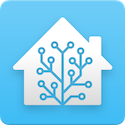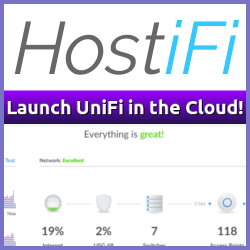
I’ve been running Home Asssistant (HA) in my network for well over a year now, and it’s primary use case has been connecting devices from different ecosystems into one management interface. Lately I have been migrating a few automations from native HA to Node-RED, which has been a fun exercise, and I’m looking to expand the usage of automations in the time to come.
My mantra for this setup is that everything that can be automated, should be automated, while at the same time keeping it as simple and unobtrusive as possible for everyone in the household.
As I’ve written about earlier, my IoT devices are split into a separate network, but that has not been a problem when integrating the various services into HA.
Below is a list of integrations, add-ons and automations I have running in my current configuration:
Home Assistant Integrations #
- IKEA TRÅDFRI — Most of my bulbs and sockets switches are IKEA Trådfri based. Currently there are 31 devices connected to it.
- Philips Hue — Bulbs and Lights. 22 in total
- Verisure — Home Alarm System, with motion sensors and socket switches
- Netatmo — Used for outside and indoor climate readings
- Pi-hole — Blocks trackers and ads in my network (setup), and this integration provides nice statistics for my HA Dashboards
- Plex Media Server — Enables event triggers when something is playing on Plex
- Sonos — Sonos Beam connected to my Samsung TV
- Synology DSM — Provides sensors for my Synology NAS
- Volumio — Volumio on an rPI provides me with streaming features for my old stereo amplifier (setup)
- Elgato Key Light — Home Office Video lighting
- Easee EV Charger — Monitoring and managing my EV Charger.
- Tibber — Provides real time power consumption, and price information from my power provider
- Google Cast — I have a Chromecast connected to an older TV in the basement.
- Google Calendar Event — Use Google Calendar events as binary triggers
- HACS — Home Assistant Community Store
There are a few others installed as well, but these are the main ones I actively use.
Home Assistant Add-ons #
- Node-RED — Automation workflow tool, preconfigured with HA integration
- Terminal & SSH — Enables Terminal and SSH access to the HA instance directly from HA itself
- Visual Studio Code — Visual Studio Code, directly in your browser while accessing HA. Preconfigured with HA integration, including autocompletion
Examples of automations I have running #
- Light color changes for calendar based events
- Automatically turn on or off Sonos Night Mode
- Automatically brew a pot of fresh coffee every morning
- Automatically turn of the coffee machine after 30 minutes (regardless if it’s powered on manually or via an automation)
- Sunrise / Sunset Lighting on / off
- Motion sensor triggered lights in the basement/bar area (triggers and lights from different ecosystems)
These automations are all pretty simple, as I’m really a novice when it comes to building automations in Node-RED, but they should be good examples for starter automations. I am sure this will be expanded throughout 2021, as I am really just starting dipping my toes into the possibilities of this setup.
At the moment, my Home Assistant Lovelace dashboards are a mess, and not very useful. I need to spend some time on reorganizing and decluttering them as well, but for now the main focus has been on automation. Perhaps I’ll do a series on Lovelace dashboards later on, once I get my Home Assistant house in order.
This is a post in the Home Assistant 101 series. Posts in this series:
Related Posts
- How I Use Home Assistant: Part 4 — Automatically Enable and Disable Sonos Night Mode with Node-RED — Published
- How I Use Home Assistant: Part 3 — Morning Coffee — Published
- How I Use Home Assistant: Part 2 — Light Color Changes for Calendar Based Events with Node-RED — Published
- Casting Home Assistant Dashboards to Google Nest Hub 2nd Gen — Published
- Combined Pi-Hole Statistics in Home Assistant — Published
